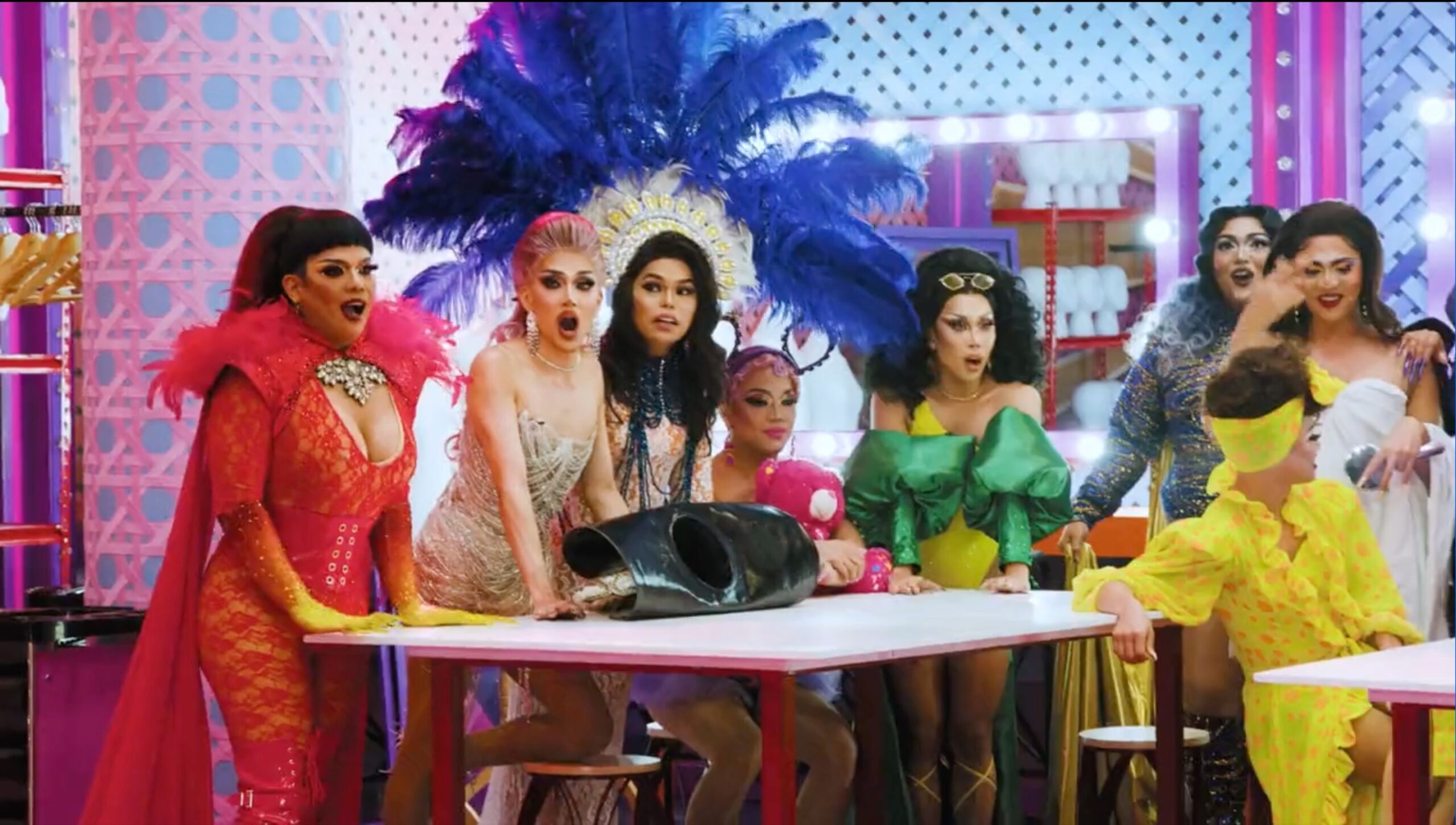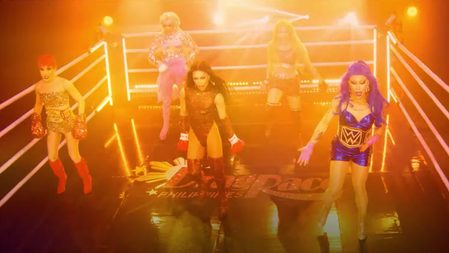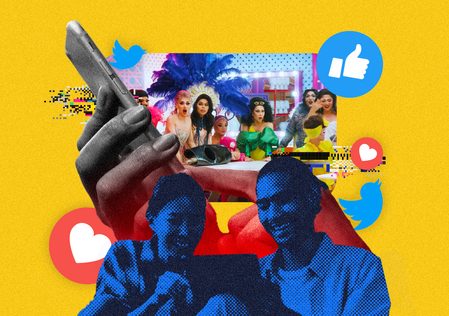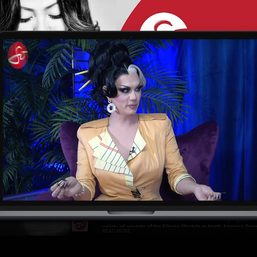SUMMARY
This is AI generated summarization, which may have errors. For context, always refer to the full article.

When Drag Race Philippines was announced over a year ago, there was palpable excitement. For better or worse, Drag Race as a television show revolutionized the art form of drag by bringing it to the mainstream, and the existence of Drag Race Philippines presented a plethora of opportunities. More than simply leveraging Filipino culture and artistry to a global audience, the series could function as a doorway towards humanizing queerness and queer lives even in far-flung provinces, while helping turn drag into a viable source of income for the artists.
People understood this. Despite their financial limitations, individuals and communities began to create spaces and ways to support the local drag community. From college students chipping in to get a shared WOW Presents+ account, to bakeries transforming their space to accommodate drag performances, these efforts were created in the hopes that, by showing that spaces outside of the show existed, maybe financiers could risk greenlighting more and better projects with queer stories and individuals at the center.
Within the first three episodes, the franchise quickly warmed the hearts of Filipinos with unique Filipino references — with the third episode, “Pop Off Ate!,” receiving one of the highest IMDB scores in Drag Race herstory. The winning chemistry of an excellent roster of queens — Brigiding, Corazon, Eva Le Queen, Gigi Era, Lady Morgana, Marina Summers, Minty Fresh, Precious Paula Nicole, Prince, Turing, Viñas Deluxe, and Xilhouete, all of whom deserve to be named here — kept audiences hooked, their humor balanced out by their heartfelt and passionate confessionals.
However, as the series progressed, the quality of the production (not the queens!) began to decline, with the most recent music video challenge being barely watchable due to improper backlighting.
The reality is that the post-production of Drag Race Philippines hasn’t kept up with the talents of the queens. In many instances, it has detracted from the storytelling: the background music drowns out dialogue and is at times tonally inconsistent with what is happening onscreen; harsh lighting and rough color grading makes it difficult to see the details of the queen’s faces and garments, at times obscuring them completely; the camerawork is shaky and dizzying, likened by some to the handheld quality of a Cinemalaya entry. What’s worse is that these problems are noticed by industry professionals and casual viewers, by local and international audiences, and by people unfamiliar with the art form and by drag artists themselves.
Creative director Fifth Solomon (The Exorsis, Nakalimutan ko nang kalimutan ka) has previously addressed these concerns online, saying that they were being taken care of and the audience has, for the most part, been understanding of the limitations given the context. Filmed during the height of the Delta surge last year, Drag Race Philippines suffers from the same financial and logistical limitations as the queens and as other productions due to COVID protocols. But when promised improvements failed to arrive, how could viewers be expected to let it slide? Especially considering that Untucked PH, which is handled by longtime actor-turned-first-time director Ice Seguerra, seems to have fewer problems.
Instead of responding to the online barrage with improved output, judges and producers have instead chosen to antagonize the same fanbase that has showed up and showed out for the franchise and the queens — from fat-shaming random Twitter users, to criticizing viewers for their lack of references, to relegating all criticism online as “hate speech” against the queer community.
Such drama outside of the competition is unsurprising. Drag Race has, in the past, been rightfully lambasted for its vile fanbase — most of whom cultivate a culture of classism within the queer community and fail to acknowledge the disproportionate hate directed towards queens of color. All of these are worsened on platforms such Twitter, where context is easily erased or ignored, obscuring the lines between shade, fair criticism, and outright hate speech.
Yet by using their platforms to shame and silence people with valid points, judges, producers, and production members use their positions of power to pull focus towards their own efforts, an act that registers as self-preservation and self-importance, whether intentional or not. But in the process, they pull focus away from the work and the artistry of the queens they purport to celebrate, whose stories they wouldn’t be able to survive without. What does it say about our culture if the same people putting the queens under a microscope are unwilling to be examined themselves? And are, time and time again, even combative towards their critics?
Much of the feedback has been dismissed under the assumption that the audience doesn’t know better: “If you don’t do drag or aren’t in production work, then you don’t know what you’re talking about.” However, this point of view is classist and ignorant of the material conditions that prevent people from having the time and resources to educate themselves. Part of sharing any art form is opening yourself up to the insight of non-professionals and the audience, much like the judges, towards the queens, are only able to assess what is in front of them.
In the context of Drag Race, efforts to direct the cultural conversation towards “kindness” have historically failed to bear any meaningful fruit. This is not to justify any form of hate speech, bullying, or even acts of intimidation (i.e. death threats) towards the queens and those involved in the production. Yet the nature of being at the (temporary) center of culture is to situate and subject one’s self to consensus and dissensus. When queer stories and art forms, which have historically been pushed to the peripheries, enters the mainstream, there will always be arguments about it — about who gets to tell the story, how the story gets told, and who deserves credit, especially for an art form such as drag whose subversiveness is woven into its nature.
In the same way that Drag Race Philippines is still struggling to find its footing as a production, the audience is still individually and collectively crafting a language around the discourse. Not everyone will be articulate or kind, especially at such an early stage. By ridiculing a vocal (and maybe even hateful) minority, judges and producers of Drag Race Philippines risk alienating the majority of their viewers — most of whom have little to no insight into the production process.
Drag Race is built on the idea that we can criticize work and celebrate it at the same time. It’s clear that audiences want future seasons of Drag Race Philippines. They’ve showed up at viewing parties, subscribed to channels only for the show, showed support via social media, and have openly given the benefit of the doubt to those involved in the production no matter their political leanings. No one wants to strip opportunities away from people helping tell queer stories, especially those who are members of the LGBTQ+ community. But if the work crumbles in the face of negative criticism, it cannot stand on its own. And it’s been crumbling for quite some time now.
Borrowing the words of film critic and writer Richard Bolisay: criticism does not define you, but your response to that criticism does. Drag Race Philippines has been renewed for a second season. It is no longer in danger of cancellation, nor is it an underdog. If the franchise cannot respect its audience, they shouldn’t be surprised if people take their talents and their money elsewhere. – Rappler.com
Add a comment
How does this make you feel?












There are no comments yet. Add your comment to start the conversation.